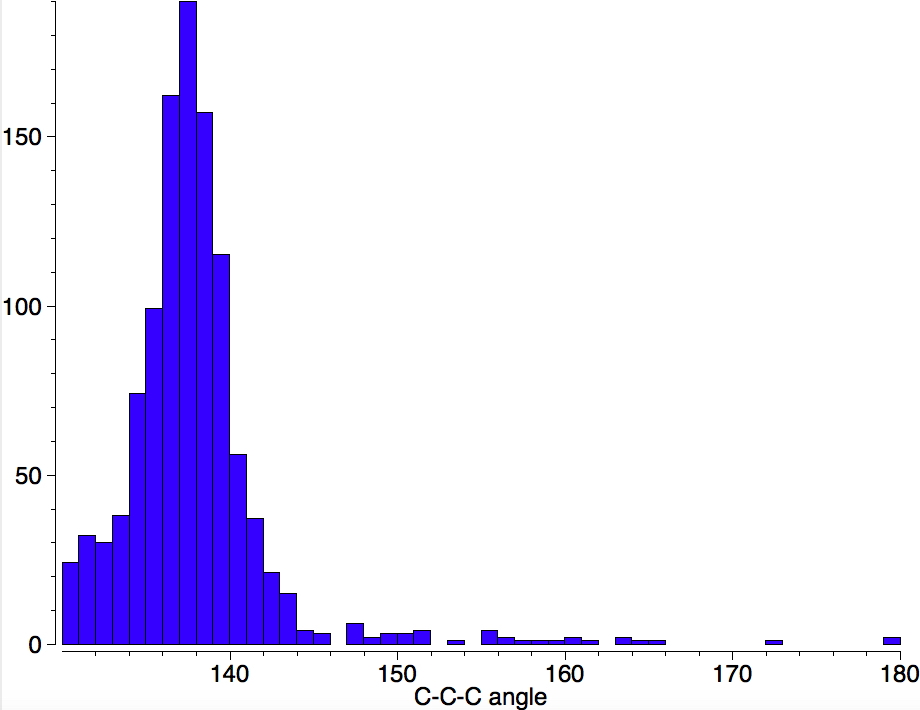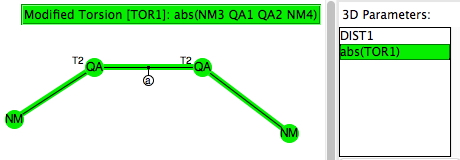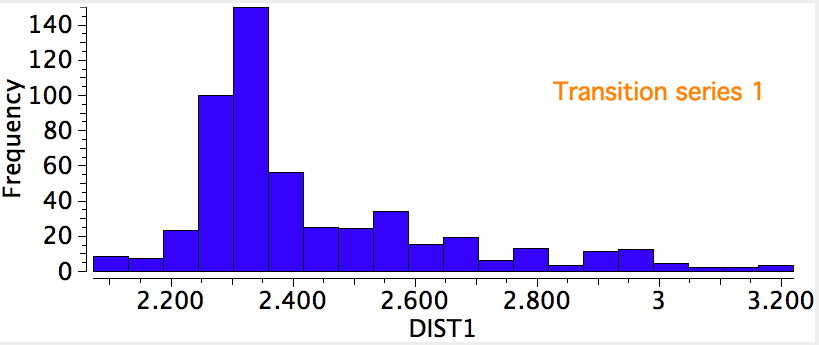
I am now inverting the previous question by asking what is the largest angle subtended at a chain of three connected 4-coordinate carbon atoms ? Let’s see if further interesting chemistry can be unearthed. Specifying only angles > 130°, the following distribution is obtained.

